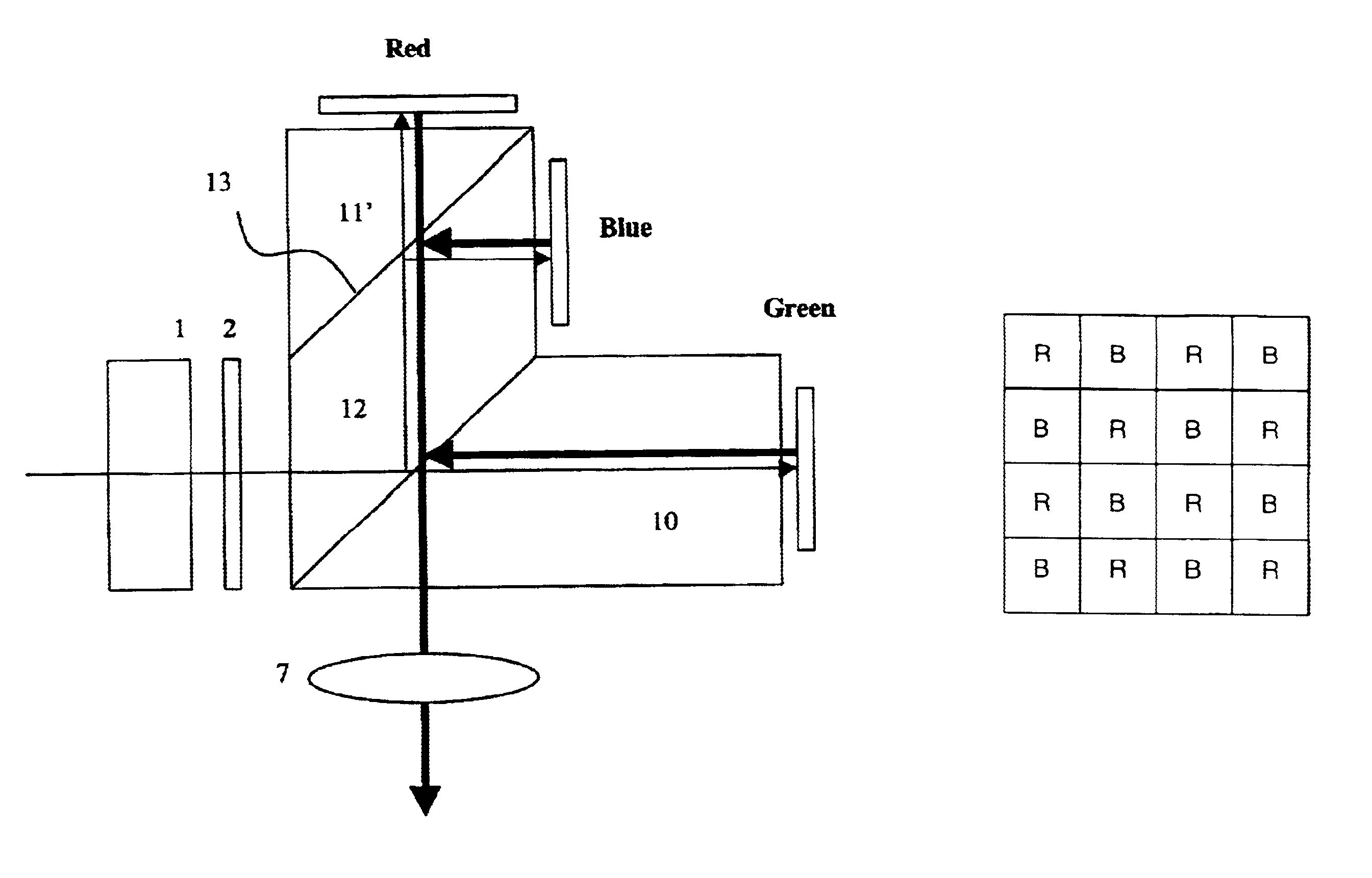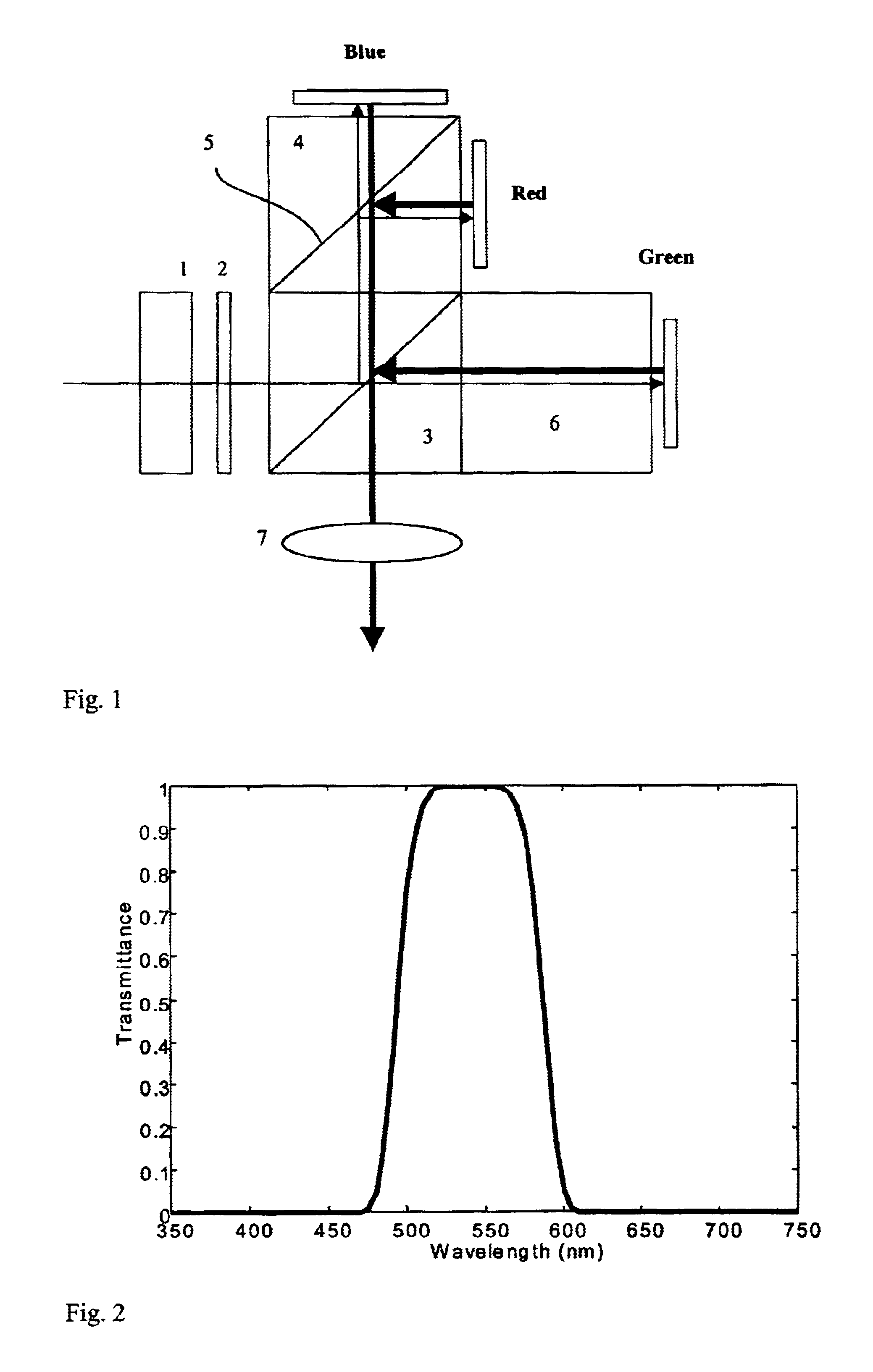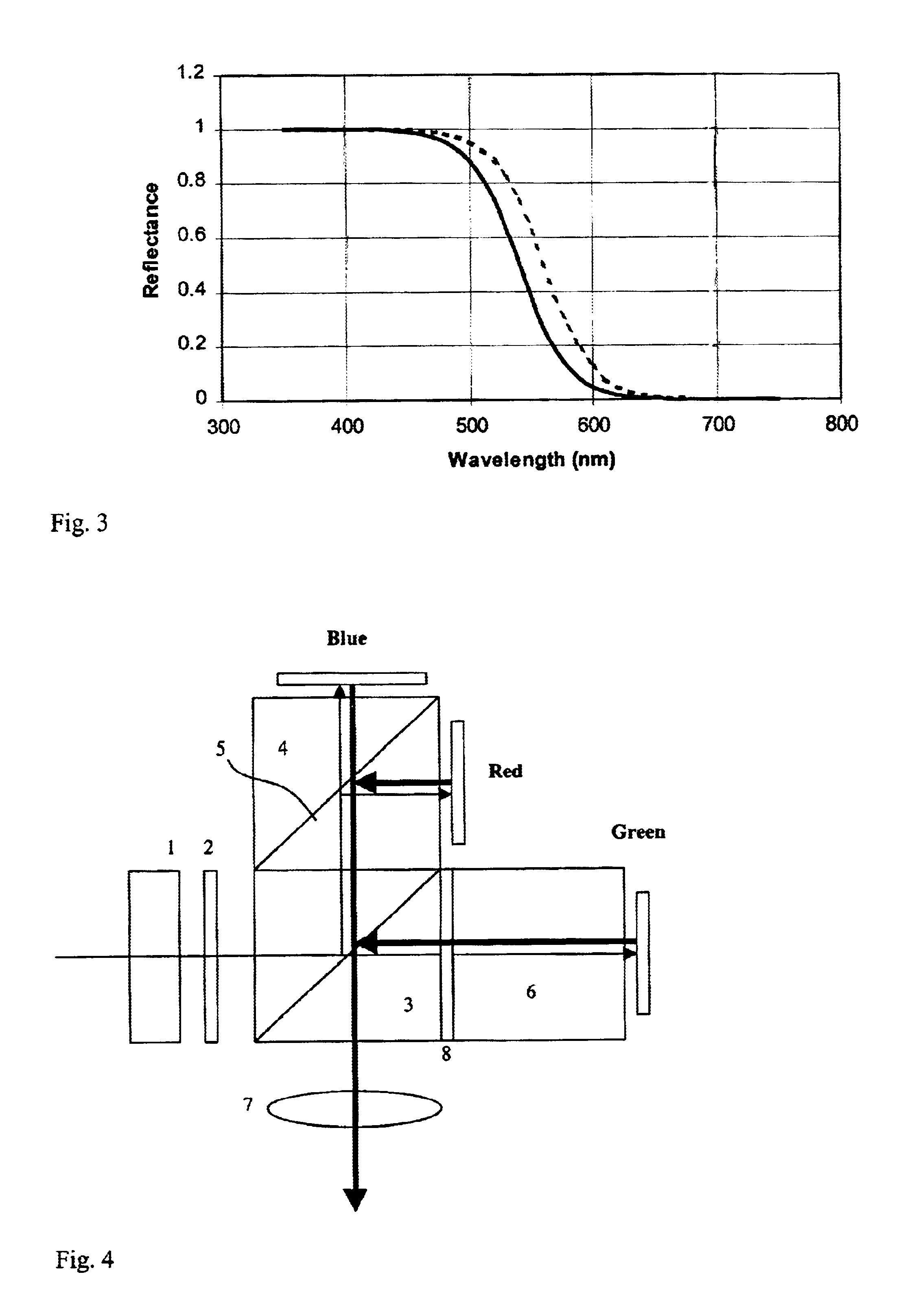Optical systems for liquid crystal display projectors
a liquid crystal display and optical system technology, applied in the field of optical systems for liquid crystal display projectors, can solve the problems of s-p polarization shift greater problem, difficult trichroic prism assembly, and inability to meet the requirements of separation and recombination prisms disclosed in the prior ar
- Summary
- Abstract
- Description
- Claims
- Application Information
AI Technical Summary
Problems solved by technology
Method used
Image
Examples
first embodiment
FIGS. 4-6 show 3 different variations of the present invention. The reflection direction of the color filter 5 can be to the left or right of the assembly. Additionally, the color clean-up green pass filter 8 can be used in the system.
FIGS. 7 and 8 show variation of the first embodiment. In these variations, the PBS 3 and color filter cube 4 and the glass cube 6 are replaced by different pieces of glass that minimize the total number of glass in the final assembly. In FIG. 7, a large right angle prism 9, and a small right angle prism 11, and an irregular shape prism 10 are used. In FIG. 8, the glass assembly now consists of right angle prism 11', irregular prism 10, and a parallelepiped prism 12. Right angle prisms 11' and 11 are essentially the same except for a different placement.
The second preferred embodiment of the present invention is shown in FIGS. 9-15. This embodiment is essentially the same as the first preferred embodiment except that the dichroic color filter 5 is repla...
embodiment 3
FIG. 26 shows the sixth preferred embodiment of the present invention. In this preferred embodiment, unpolarized light is used without further polarization conversion. The PBS 3 separates s- and p-polarized light into 2 equal channels. In the green channel, a green band pass filter 8 is used to pass the green light only. The green light is then modulated by the green liquid crystal light valve Green. In the other channel, an optional magenta filter 19 is used to pass blue and red light bands. A liquid crystal light valve Red / Blue with on-chip color filters and subpixels for red and blue colors as used in preferred embodiment 3 is used to modulate the magenta light.
This preferred embodiment has the advantage that it is extremely simple. But the disadvantage is that only 1 / 3 of the light is utilized.
FIGS. 27 and 28 show variations of this sixth preferred embodiment. In FIG. 27, the p-polarized light after passing through PBS 3 is filtered by a red filter 20. This red light is sent to ...
PUM
| Property | Measurement | Unit |
|---|---|---|
| angle | aaaaa | aaaaa |
| angle of incidence | aaaaa | aaaaa |
| angle of incidence | aaaaa | aaaaa |
Abstract
Description
Claims
Application Information
 Login to View More
Login to View More - R&D
- Intellectual Property
- Life Sciences
- Materials
- Tech Scout
- Unparalleled Data Quality
- Higher Quality Content
- 60% Fewer Hallucinations
Browse by: Latest US Patents, China's latest patents, Technical Efficacy Thesaurus, Application Domain, Technology Topic, Popular Technical Reports.
© 2025 PatSnap. All rights reserved.Legal|Privacy policy|Modern Slavery Act Transparency Statement|Sitemap|About US| Contact US: help@patsnap.com



